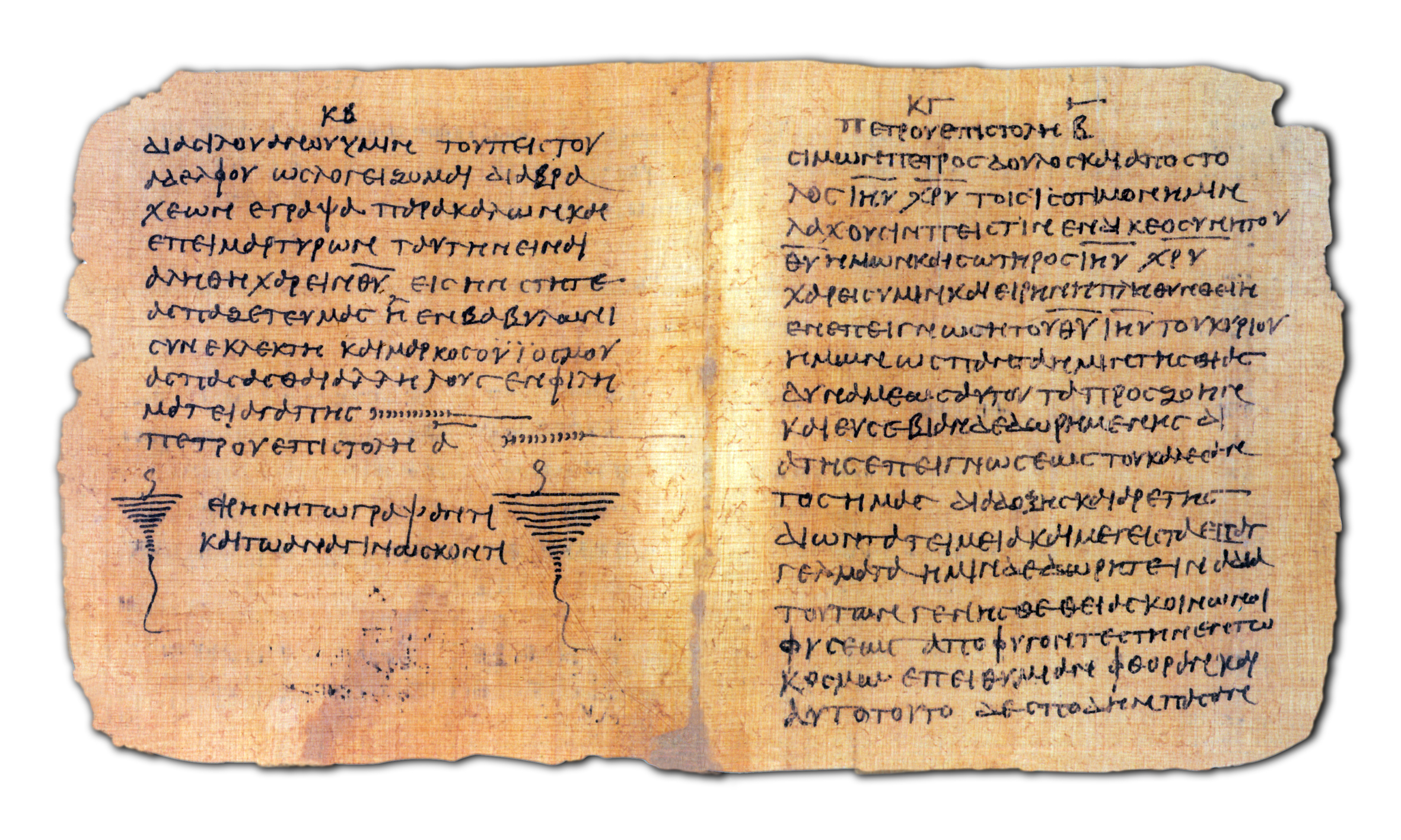


Cuneiform Tablets, Ur, c. 2000 BCE
Top, a receipt for a shekel of silver. Reign of Ibi-Sin.

List of Books on Papyrus, Egypt, 6th Century
Rare Books Collection, CU Boulder Libraries
Papyrus had been in use as a writing surface in Egypt from roughly 3,000 BCE.. It retained its usefulness in Greece and Rome until late antiquity, roughly coinciding with the decline of the western Roman Empire.
The Roman natural historian Pliny describes the process as one in which the inside of the triangular stalk of the plant would be cut or peeled into long strips, which were then laid in a grid pattern, dampened, pressed, dried, and polished. This process created a smooth surface, which would take ink. As seen by the piece (MS 106) held by Rare Books Collection, which shows a 6th century CE list of books, papyrus tends to become brittle and fragment over time.

Many early Christian works, such as the Dead Sea Scrolls and the Bodmer Papyri (c. 200 CE) above, were written on a similar surface.

John 19:7-12, Latin Bible, c. 1100-1160, Switzerland, Ege 1,
Gift of Diane and Robert Greenlee in honor of Professor Amy Vandersall
Rare Books Collection, CU Boulder Libraries
Over the course of the late Roman Empire, vellum - or animal skin - bound into the form of a codex - the form of our modern-day book - would become the preferred writing surface. A number of factors may have led to this change. The decline of the Roman Empire in the west and related unrest in the Mediterranean may have made the acquisition of papyrus - much of it grown in Egypt and the eastern Mediterranean - more difficult. Moreover, as a product, a leather bound codex is more durable than a scroll made of papyrus. The rise of Christianity, too, seemed to play a role.
Vellum, however, was neither economical nor easy to prepare. It has been estimated that one Bible requires roughly 200 animal skins, each requiring soaking in lime, stretching, and repeated scraping with a lunellum - a crescent-shaped knife - to prepare the surface for writing.
The ink (see demonstration, British Library) was made of oak galls, gum Arabic, and iron sulfate.

See oak gall on small branch
The durability of vellum was also conducive to illumination or decoration. Gold leaf, minerals such as malachite (green) and lapis lazuli (blue), the lapis imported into Europe from Afghanistan, and the Polish cochineal or louse (red) provided vibrant colors. Beyond medieval books highly decorative illuminated initials, many included historiated initials, or decorative initials that helped tell the story of the text that followed, such a the scene below showing Job sitting on a dung heap.

Latin Bible (Jerome, Prologue to Job - Job 5: 9). Paris, c. 1220-30, MS 317
Rare Books Collection, CU Boulder Libraries


'Dragon Leaf,' Latin Bible, N. France, c. 1240. MS 314 (left)
Gutenberg Leaf, Latin Bible, 1455 (right)
Rare Books Collection, CU Boulder Libraries
Displayed side-by-side, the two bible leaves shown above - the Rare Books Collection's 'Dragon Leaf' and 'Gutenberg Leaf' - demonstrate the desire by Johannes Gutenberg to produce a product that was both revolutionary in its technology and traditional in its appearance. the Rare Books Collection's 'Dragon Leaf' on the left was created on vellum, written using oak gall ink, and decorated with gold leaf and lapis in the early 13th century. The 'Gutenberg Leaf' was letterpress printed by Johannes Gutenberg, using the moveable type made of lead, tin, antimony, set on a composing stick (see below), organized onto a galley, and printed on a press fashioned from a design with a screw-type lever similar to that of a wine press.


The result was a bible very similar in its page structure and design to the earlier bibles that had graced the altars of cathedrals for centuries: double-columned, decorated with illuminated initials, and with a type-face (fractur) very close to that of manuscript writing of northern Europe.
Gutenberg's development of moveable type revolutionized the process of communicating ideas. During the three years he was in business, he was able to print 180 bibles, roughly 180 times the speed of the copying of a bible before 1450.